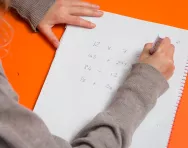What are NFER tests?

At the end of Year 2 and Year 6, children take compulsory SATs in English and maths. But in the other school years, there’s no compulsory, externally set testing procedure. This means that schools have to find their own ways to test and monitor children’s progress and achievement. One such method is to use NFER tests.
What are NFER tests?
The National Foundation for Educational Research (NFER) is a charity that provides independent research into education and children’s services. Informed by its research, NFER launched a new range of tests for primary school pupils. ‘The NFER tests are paper-based tests that schools can purchase and use as end of term or end of year assessments,’ explains Alex Gutteridge, marketing manager at NFER.


Boost Your Child's English & Maths!
- Weekly programme for each school year
- Worksheets sent direct to your inbox
- Keeps your child's learning on track
For children in Years 3-6 they are available for English (reading comprehension), maths, grammar and punctuation and spelling. For children in Years 1-2 they are available for English (reading comprehension) and maths.
NFER test results give concrete evidence to support teacher assessment of a child’s attainment, help them map progress and set targets, and enable them to identify areas of strength and weakness. The tests are designed to be a fresh alternative to the optional end of year tests offered by other companies, with a more modern context and questions worded like they are in class.
Assessing very young children is always a contentious issue. The NFER KS1 assessments have been developed in collaboration with teachers, with the young age of pupils in mind. They are designed to be child-friendly, with an age-appropriate level of support provided through the tests.
What do the tests involve?
NFER tests are aligned to the current 2014 national curriculum and test the knowledge and skills that a child is expected to have gained during the school year.
On the maths paper, a typical question might be:
Write down the two days when the temperature rounds to 5˚C
Monday 3.5˚C
Tuesday 5.4˚C
Wednesday -2.5˚C
Thursday -4.9˚C
Friday 4.7˚C
The English papers consist of a variety of types of text, both fiction and non-fiction, linked by a topic or theme. Children have to answer questions based on their understanding of the passages, such as:
This story is set in the autumnal forest. What clues are there that the story takes place in autumn? Explain your answer fully, using the text to help you.
What do the marks mean?
NFER tests produce two types of result. ‘The number of marks that a pupil gains produces an age-standardised score,’ explains Alex. ‘This compares their performance with that of other pupils of the same age. This is important in primary schools, as pupils who are the youngest in their year group tend to perform less well than the eldest.’ The average, nationally standardised score is 100; about 68 per cent of all children taking the tests will achieve a mark within 15 points of that (so, between 85 and 115).
What if you’re concerned about your child’s marks?
You may be told your child’s NFER marks as a separate grade on their school report, or the results may be used as part of the teacher’s overall assessment of their attainment. ‘If you have any concerns about your child’s result, you should talk to their teacher,’ says Alex. ‘It’s important to remember that the test is a snapshot of performance. It will often be supplemented by a teacher assessment result, which takes into account your child’s performance across a range of different activities and over a longer period of time.’

Give your child a headstart
- FREE articles & expert information
- FREE resources & activities
- FREE homework help








